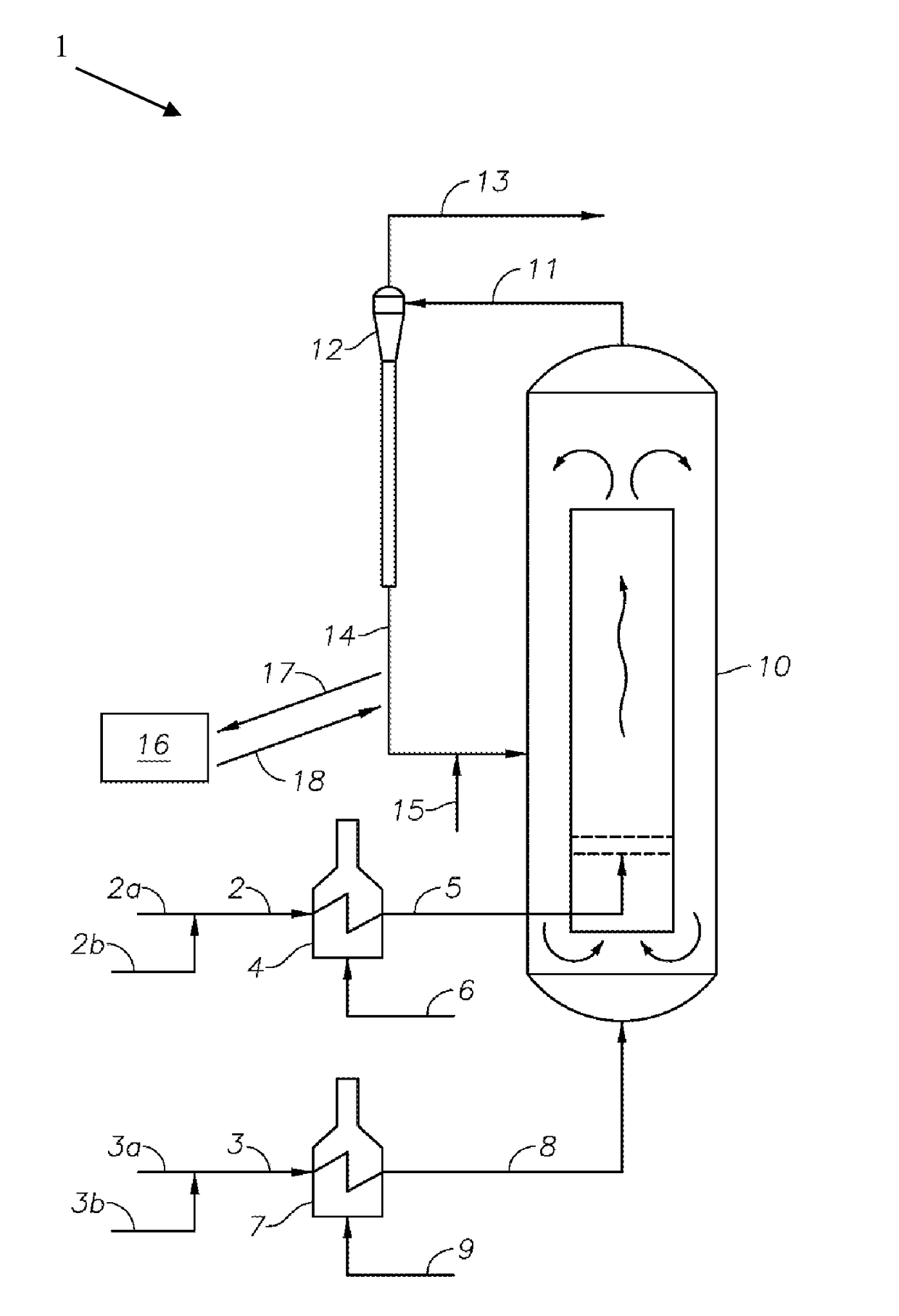Processes and Systems for the Conversion of Acyclic Hydrocarbons
a technology of acyclic hydrocarbons and reactor systems, which is applied in the direction of hydrocarbon preparation catalysts, organic chemistry, chemistry apparatuses and processes, etc., can solve the problems of low cpd, high cost due to supply limitations, and inability to perform cyclization
- Summary
- Abstract
- Description
- Claims
- Application Information
AI Technical Summary
Benefits of technology
Problems solved by technology
Method used
Image
Examples
example 1
erformance Modeling
[0174]Reactor modeling was performed using Invensys Systems Inc. PRO / II 9.3.4 for the purpose of estimating the performance at various commercially relevant operating conditions. Depending on specifics of the modeling, variation in results will occur but the models will still demonstrate the relative benefits of the present invention. Numerous modifications and variations are possible and it is to be understood that within the scope of the claims, the invention may be practiced otherwise than as specifically described herein.
example 1a
luent, 20 Psia Outlet Pressure, 10 Psia HC Partial Pressure
[0175]A 20 psia outlet pressure, 575° C. outlet temperature, fluidized bed reactor is simulated with a feed comprising of n-pentane, which is pre-heated to 621° C. prior to feeding into the fluidized bed, and a co-feed comprising of methane and hydrogen, which is separately pre-heated to a temperature required to supply 100% of the heat of reaction. Under these conditions, the catalyst is assumed to have a lights selectivity (C4-products) of ˜18%. The residence time within the catalyst bed is assumed to provide for CPD concentration to reach its thermodynamic concentration at the reactor outlet conditions. The hydrogen molar rate in reactor co-feed is set to deliver a molar ratio of hydrogen:n-pentane in feed of 1:1. The methane molar rate in reactor co-feed is set to deliver a methane partial pressure at reactor outlet of 10 psia (i.e., combined partial pressure of all other hydrocarbons including hydrogen of 10 psia). Base...
example 1b
luent, 950° C. Co-Feed Preheat, 10 Psia Outlet HC Partial Pressure
[0176]As a comparative to Example 1A, a 575° C. outlet temperature, fluidized bed reactor is simulated with a feed comprising of n-pentane, which is pre-heated to 621° C. prior to feeding into the fluidized bed, and a co-feed comprising of methane and hydrogen, which is separately pre-heated to 950° C. Under these conditions, the catalyst is assumed to have a lights selectivity (C4-products) of ˜18%. The residence time within the catalyst bed is assumed to provide for CPD concentration to reach its thermodynamic concentration at the reactor outlet conditions. The hydrogen molar rate in reactor co-feed is set to deliver a molar ratio of hydrogen:n-pentane in feed of 1:1. The methane molar rate in reactor co-feed is set to deliver 100% of the heat of reaction. The combined outlet pressure of all components including hydrogen, with the exception of methane, is set at 10 psia by adjusting the total outlet pressure. To gen...
PUM
| Property | Measurement | Unit |
|---|---|---|
| temperature | aaaaa | aaaaa |
| temperature | aaaaa | aaaaa |
| temperature | aaaaa | aaaaa |
Abstract
Description
Claims
Application Information
 Login to View More
Login to View More - R&D
- Intellectual Property
- Life Sciences
- Materials
- Tech Scout
- Unparalleled Data Quality
- Higher Quality Content
- 60% Fewer Hallucinations
Browse by: Latest US Patents, China's latest patents, Technical Efficacy Thesaurus, Application Domain, Technology Topic, Popular Technical Reports.
© 2025 PatSnap. All rights reserved.Legal|Privacy policy|Modern Slavery Act Transparency Statement|Sitemap|About US| Contact US: help@patsnap.com



